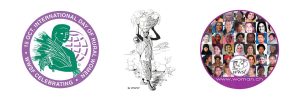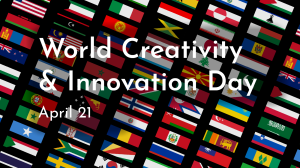Rural Women Sustaining Nature for Our Collective Future
Achieving gender equality and empowering women is not only the right thing to do but is a critical ingredient in the fight against extreme poverty, hunger and climate change.
Women are responsible for half of the world’s food production while working as environmental and biodiversity stewards. As farmers, women have learned how to cope with and adapt to climate change, for example, by practicing sustainable agriculture in harmony with nature, switching to drought-resistant seeds, employing low-impact or organic soil management techniques, or leading community-based reforestation and restoration efforts
Indigenous women have been at the forefront of environmental conservation by bringing invaluable ancestral knowledge and practices, and rural women have been leading global and national climate movements that have spotlighted the need for action for the sake of this and future generations..
Given their position on the frontlines of the climate crisis, women are uniquely situated to be agents of change — to help find ways to mitigate the causes of global warming and adapt to its impacts on the ground.
However, reports prove that climate change has a more pronounced impact on women, primarily indigenous and peasant women, whose agricultural dependence, living conditions, and marginalization expose them to a greater degree of changes due to climate, loss of diversity, and pollution.
This International Day of Rural Women’s theme is “Rural Women Sustaining Nature for Our Collective Future: Building climate resilience, conserving biodiversity, and caring for land towards gender equality and empowerment of women and girls.”
Let’s promote their work as food providers and protectors of the environment. Let’s demand their participation in decision-making within their communities. Let’s promote rural areas where women can have the same opportunities as men.
Did you know?
- Rural women have less access to a range of resources, from land rights and credit to education and technology. If women had the same access to productive resources as men, farm yields could increase by 20–30 per cent, feeding an additional 100 to 150 million people.
- Every year, female-headed households experience income losses of 8 percent due to heat stress, and 3 percent due to floods, relative to male-headed households.
- A 1° C increase in long-term average temperatures is associated with a 34 percent reduction in the total incomes of female-headed households, relative to those of male-headed households.

 2024 Theme: From Clicks to Progress: Youth Digital Pathways for Sustainable Development
2024 Theme: From Clicks to Progress: Youth Digital Pathways for Sustainable Development


 Background
Background
 Every year on January 4th, World Braille Day reminds us of the importance of accessibility and independence for those who are blind or visually impaired.
Every year on January 4th, World Braille Day reminds us of the importance of accessibility and independence for those who are blind or visually impaired.
 It is recorded in the gospel text of today (John 17:20:26).
It is recorded in the gospel text of today (John 17:20:26).
 World Food Day is annually held on October 16 to commemorate the founding of the United Nations’ (UN) Food and Agriculture Organization (FAO). Each year has a different theme.
World Food Day is annually held on October 16 to commemorate the founding of the United Nations’ (UN) Food and Agriculture Organization (FAO). Each year has a different theme.